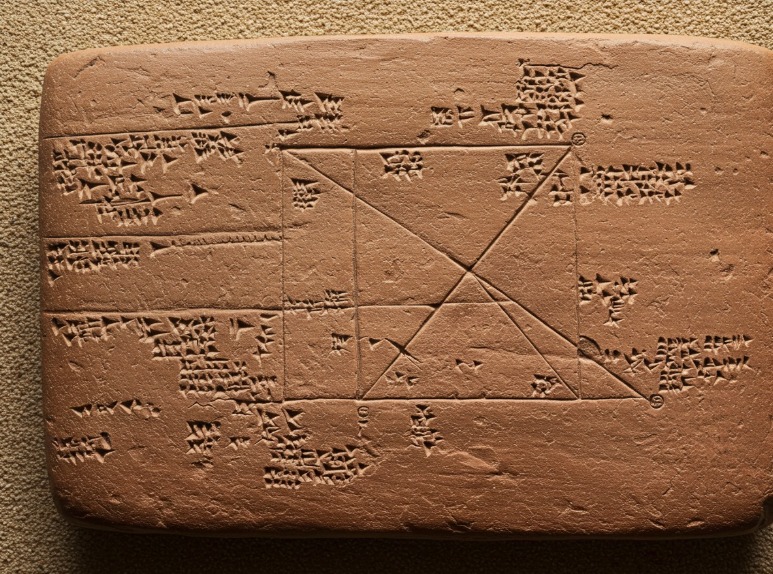An Ancient Mathematical Revelation Buried in Clay
Long before the rise of classical Greece and the birth of its famed philosophers, a civilization along the banks of the Tigris and Euphrates was quietly achieving mathematical breakthroughs that would echo across millennia. Among their most astonishing contributions is a 3,700-year-old clay tablet that contains the earliest known evidence of a geometric principle we now associate with the Greek thinker Pythagoras.

IM 67118: A Babylonian Masterclass in Geometry
Discovered in ancient Mesopotamia and dating to approximately 1770 BCE, the tablet known as IM 67118 records a lesson in calculating the diagonal of a rectangle. What’s extraordinary is that this lesson employs the exact formula we recognize today as the Pythagorean theorem: a² + b² = c². This demonstrates that the Babylonians had a practical and theoretical grasp of right-angled triangles more than a thousand years before Pythagoras lived.
Far from being a simple observation, the inscription shows a step-by-step approach, suggesting this was used for instructional purposes. It’s a window into a classroom of the ancient world, where geometry wasn’t philosophical musing—it was applied knowledge, passed from master to student using clay and stylus.
Plimpton 322: Even Older, Even More Complex
Adding further depth to our understanding is the Plimpton 322 tablet, dating to around 1800 BCE. This artifact contains a detailed list of Pythagorean triples—combinations of numbers like 3, 4, and 5 that fit perfectly into the equation of a right triangle. The precision of this table suggests it was a tool for advanced study, possibly used to teach surveying, construction, or even early forms of algebra.
The Legacy of the Base-60 System
Beyond geometry, the Babylonians contributed something that still governs our daily lives: the sexagesimal (base-60) number system. This system explains why we divide time into 60 minutes per hour and circles into 360 degrees. Though developed over 3,000 years ago, this mathematical framework remains deeply embedded in modern science, navigation, and timekeeping.
Rewriting the Origins of Mathematical Thought
The implications of these findings are profound. They force us to reconsider the origins of mathematical knowledge and give long-overdue recognition to the Babylonian mathematicians who were teaching, calculating, and recording complex principles in the Bronze Age.
Conclusion: The True Pioneers of Geometry
While Pythagoras undoubtedly played a pivotal role in shaping mathematical theory, tablets like IM 67118 and Plimpton 322 reveal that the foundations of geometry were already being laid in ancient Mesopotamia centuries before his time. These clay records, inscribed in cuneiform and preserved against the odds, stand as enduring proof that mathematical brilliance is not bound to any one culture or era. The “Pythagorean” theorem, it turns out, may owe as much to the Babylonians as it does to the Greeks—a remarkable reminder that history is always more layered than it first appears.
Leave a Reply